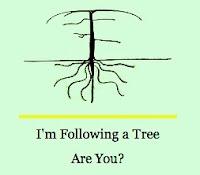 Among its many lockdown articles, The New York Times featured one last week that I think might be of interest to fellow tree-followers: “7 Tips for Watching Birds During the Spring Lockdown” by David Sibley (in the Opinion section). In the subhead he adds: “Here are some principles you can apply to any form of nature study.” And later: “I’m writing about bird-watching here, but these same seven principles apply just as well to any form of nature study. Take some time to really look at a tree …”
Among its many lockdown articles, The New York Times featured one last week that I think might be of interest to fellow tree-followers: “7 Tips for Watching Birds During the Spring Lockdown” by David Sibley (in the Opinion section). In the subhead he adds: “Here are some principles you can apply to any form of nature study.” And later: “I’m writing about bird-watching here, but these same seven principles apply just as well to any form of nature study. Take some time to really look at a tree …”That's what we do every month! And that’s what I did yesterday in LaBonte Park, home of the tree I’m following. Where I quote Sibley below, “tree” is substituted for “bird”.

So nice to see spots of green waving in the wind :)
Notice Trees “With a little practice you’ll be amazed at what you can see.” We tree-followers are already pretty good at this. Each month we look carefully at the tree we're following, and provide an update at the virtual gathering. This month, there were big changes for my tree—emerging leaves and flower buds! I took many photos; fortunately a few were in focus.
All but one of my close-ups looked like this, due to "Wyoming spring breezes".
Look at the leaves and flowers “In most cases, if you can get a good look at the leaves and flowers [or bill and face of a bird] it will be possible to identify the species.” I’m still working on this. It will be easier once the flowers and leaves open. And as Sibley says in his introduction “You don’t have to identify the species, although there is a wealth of information available if you know a tree’s name. The most important thing is just to notice trees, slow down and really watch them.” I agree.
Be curious “If you stop to watch, ask a question and pick out some details, you will remember those details, as well as other things that you didn’t even focus on.” This will lead to “lots of interesting discoveries.” I wondered what this tree will look like when covered in leaves—very different I'm pretty sure.
Next, I tried bird-watching. Though cool and windy, the lakeshore looked inviting. I forgot to bring my binoculars and bird book, but as it turned out, I didn't need them.
In addition to the familiar mallards and gulls, there were smaller birds on the water that looked like shorebirds, with thin bills and long necks. But if shorebirds, why were they swimming around out on the lake?

See the mallard butt? Click on these bird photos to see details.
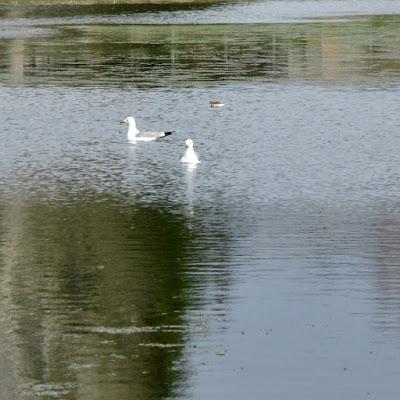
Gulls, home from a hard day at the dump. Note smaller bird behind.
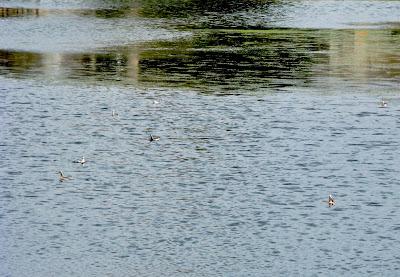
There are seven of the smaller birds in this photo, some with white stripes and brown patches. What are they?
I sat down to watch the smaller birds, and think about what they were doing, following Sibley's advice. Big surprise—they were spinning in place! I’m not exaggerating. Each one quickly whirled around, and then did it again, over and over. I thought and thought ... hmmm.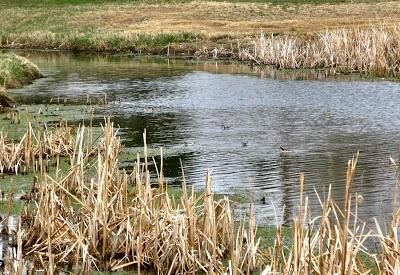

Here's Wilson's Phalarope up close—a female in breeding plumage. I saw several of these on LaBonte Pond. The white stripe on the back of the neck and orange-ish brown patches on the sides were sometimes visible even without binos. Photo courtesy Dominic Sherony.
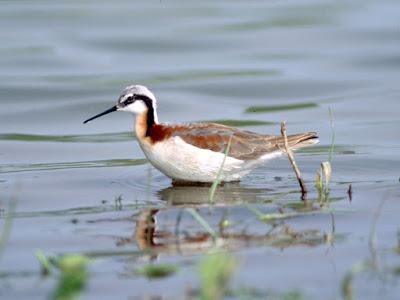
I used four of Sibley’s seven tips; more next time. If you want to read his article but hit a paywall, email me for a PDF (see Contact tab above).
